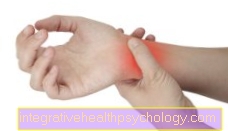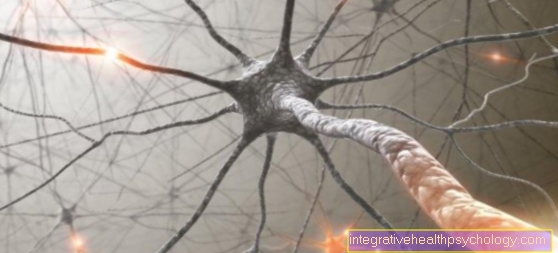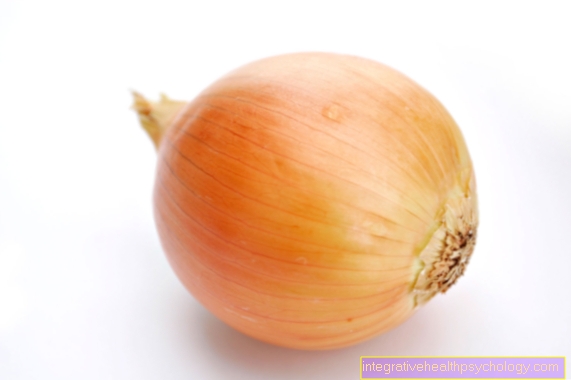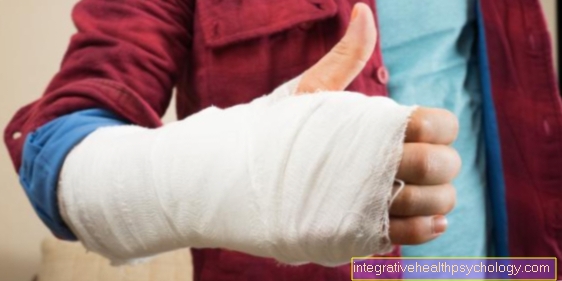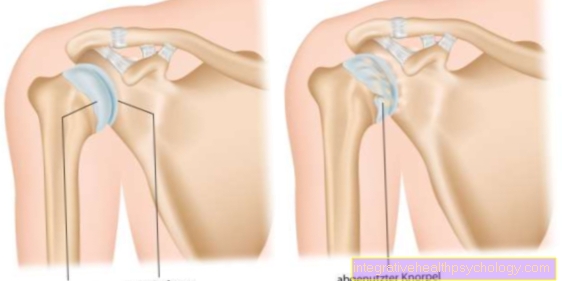Tailbone pain during pregnancy
introduction
The pain in the tailbone is a common complaint during pregnancy.
The causes and thus the origin of the pain are very variable. There are some pregnancy-specific triggers, but sometimes pressure, fractures, or entrapment of nerves are reasons for tailbone pain.
Depending on how severe the pain is, one can even speak of coccygodynia. Coccygodynia describes a strong pain radiating to the anal, lumbar and hip areas in the coccyx region, which gets its name from the affected bone structure (lat. Os coccygis = Tailbone).

causes
A common cause of tailbone pain during pregnancy is gestational pelveopathy.
This is understood to mean the painful change in the structure of the pelvic ring during pregnancy (med. Gestation). In the small pelvis in particular, the pelvic ring is widened or loosened. By definition, the pelvic ring includes the sacrum (lat. Sacrum), which is followed by the tailbone and the two hip bones (lat. Ossa coxae), which each consist of 3 bony structures, the iliac bone (lat. Os ilium), Ischium (lat. Os ischii) and pubic bone (lat. Pubis), composed.
The dimensions of the pelvis play an important role in pregnancy, as they can be used to determine whether the child will fit through the pelvic opening during birth. Therefore, as the pregnancy progresses, the pelvic ring loosens in order to offer the child enough space when passing through the birth canal. This physiological structural change then often leads to pain in the coccyx region in pregnant women. Muscular stretching goes hand in hand with the widening of the bones, as the pelvic bones are secured by a muscular apparatus. It is precisely this stretching that can lead to the pain radiating to the back.
Towards the end of pregnancy, childbirth can become more painful, as the child can exert strong pressure on the tailbone as it passes through the birth canal. A tailbone fracture is considered a complication in childbirth when the resistance exerted by the bony structures is not strong enough to counteract the compressive forces of the child.
The causes mentioned so far are very specific to pregnancy. However, there are other reasons that should not be ignored during pregnancy.
You might also be interested in our next article: Tailbone pain when sitting

Other causes
The tailbone pain can originate from different structures. If the pain results from discomfort in the tailbone itself, a contusion, fracture or compression of the bone may be the trigger. Fractures are usually only caused by strong external forces or falls, but a bruise is very easy to get. A bruise or compression can arise during pregnancy solely from the fact that the child exerts a lot of pressure on the surrounding structures in the abdomen and that the coccyx in particular is susceptible and therefore often causes pain during pregnancy.
In addition to the bone, tailbone pain can also originate from the nerves. The lumbosacral nerve plexus is particularly relevant. The compression caused by the mass during pregnancy can lead to severe radiating pain in the coccyx region. A less harmless cause than nerve compression is the presence of cervical cancer (lat. Cervical cancer). The classic triad of cervical carcinoma are lumbosacral pain, unilateral uterine obstruction, and lymphedema. Because the degenerated tissue infiltrates the lumbosacral nerve plexus, which is in close topographical relationship to the coccyx, the pain radiates with pleasure and those affected suffer from lumbosacral pain or coccyx pain.
As a special form of lower abdominal pain, lower back pain often occurs during pregnancy due to the loosening of the tissue. These pregnancy-related pains also radiate into the tailbone region and should therefore be considered as causes of tailbone pain.
You may also be interested in this topic: Hip pain in pregnancy
Appointment with ?

I would be happy to advise you!
Who am I?
My name is I am a specialist in orthopedics and the founder of .
Various television programs and print media report regularly about my work. On HR television you can see me every 6 weeks live on "Hallo Hessen".
But now enough is indicated ;-)
In order to be able to treat successfully in orthopedics, a thorough examination, diagnosis and a medical history are required.
In our very economic world in particular, there is too little time to thoroughly grasp the complex diseases of orthopedics and thus initiate targeted treatment.
I don't want to join the ranks of "quick knife pullers".
The aim of any treatment is treatment without surgery.
Which therapy achieves the best results in the long term can only be determined after looking at all of the information (Examination, X-ray, ultrasound, MRI, etc.) be assessed.
You will find me:
- - orthopedic surgeons
14
You can make an appointment here.
Unfortunately, it is currently only possible to make an appointment with private health insurers. I hope for your understanding!
For more information about myself, see - Orthopedists.
Symptoms
The tailbone pain expresses itself very classically, as the name suggests, in the form of pain in the tailbone region. The pain characteristics can vary from dull to piercing, but in any case it is excruciating and is perceived as unpleasant. The tailbone pain can possibly radiate into the surrounding back region.
If the tailbone pain is particularly severe, it is even referred to as coccygodynia, which, as already explained, describes a strong pain in the tailbone region that radiates into the anal, lumbar and hip areas.
The tailbone pain occurs more frequently in early or late pregnancy (1st trimester the 3rd trimester).
Since pain can be provoked primarily by pressure on the tailbone, it occurs more intensely when sitting or lying down. However, the tailbone pain is also noticeable when walking, as the hip and pelvic region with its muscular and bony parts are integrated into the movement mechanism.
Usually the pain is not long-lasting, but if the opposite is the case, care must be taken to prevent tailbone pain from becoming chronic and appropriate therapeutic measures taken.
Also read: Pain in the buttock during pregnancy
Temporal occurrence of tailbone pain
Tailbone pain in early pregnancy
Tailbone pain can also arise from non-gynecological reasons (trauma, malignant neoplasms in the pelvic area, nervous disorders). These must be taken into account in the clarification.
Past infections of the internal female genital organs can also lead to transport disorders of the fallopian tubes. On the basis of this transport disruption, a fertilized egg cell can incorrectly implant itself in the fallopian tubes.
However, the cells divide in the same way as if they implanted correctly in the uterine lining. The enlargement causes stretching and tension of the fallopian tubes. This creates pain that can occur in the lower abdomen as well as in the back or buttocks. A gynecologist should definitely be consulted to check the implantation with the help of an ultrasound device.
If the pain is associated with vaginal bleeding, it is also important to contact a gynecologist and a hospital as a miscarriage is possible.
Read more about this: Ectopic pregnancy
Tailbone pain at the end of pregnancy
Towards the end of pregnancy, contractions and pre-contractions can occur. These contractions make the child better off with a view to giving birth. The pre-contractions in particular can be relatively strong and trigger pain and fear in the pregnant woman.
Labor is generally a contraction of the muscles of the uterus. The contractions increase the pressure in the abdomen. The tailbone can also be affected. A small maternal pelvis, a large fetus, twin pregnancies, changes in the uterus (fibroids) and many other factors can lead to even higher pressure and thus to increased stress on the pelvis and coccyx.
In addition to the pressure situation, infections, malignant neoplasms, nerve damage and miscarriages can be the cause. However, these are very rare compared to the pain caused by the pressure.
Also read our topic: Labor pains
Tailbone pain after childbirth
The mother's body is exposed to extreme stresses during vaginal delivery. The uterine muscles create strong contractions.The cervix, the vagina, the pelvic ring and the pelvic floor muscles including the skin are stretched considerably. Due to these stresses and possibly other complications, birth injuries can occur.
This also includes tears in the pelvic floor muscles that are connected to the tailbone. Such injuries can lead to protracted pain and dysfunction in the pelvic area. In addition to the muscles, bony injuries to the coccyx can also persist. The injuries and the healing process should be observed and the regression or healing promoted.
Infections, nerve damage, tumors and other aspects can also be considered as causes.
In the event of persistent, severe and unexplained pain, a doctor should be consulted.
Read more on this topic at: Tailbone pain after childbirth
diagnosis
Depending on the cause, different means can be used to make a diagnosis.
In most cases, however, classic procedures involve ultrasound examination (Sonography), the MRI during pregnancy (=Magnetic resonance imaging) and the CT (=Computed Tomography) represent.
In view of the radiation exposure for the unborn child, all procedures leading to a diagnosis must be carefully considered. Only the MRI can be performed during pregnancy without exposure to radiation. But here too there are strict restrictions:
X-ray diagnostics is the first choice for gestational pelveopathy.
If cervical cancer is suspected, cytology and colposcopy play an important role. This means, on the one hand, taking a swab from the epithelium of the cervix and, on the other hand, inspecting the cervix with the help of a colposcope.
Not to be forgotten is to have a good anamnesis interview with the patient in order to be able to isolate possible causes of tailbone pain during pregnancy. The pain history includes the localization, type, frequency and severity of the pain.
It is also relevant to find out how long the tailbone pain has existed, whether the pain is radiating and whether the patient can relate the pain to a causal relationship (e.g. a fall on the tailbone). Finally, the attending physician should ask whether pain relief measures have already been taken, if so, which ones and whether there are positions in which the tailbone pain is stronger or weaker.
For detailed information on diagnostic procedures in pregnancy, see: Ultrasound in pregnancy
Which doctor treats tailbone pain during pregnancy?
The first point of contact regarding pain during pregnancy should be the gynecologist. Generally speaking, tailbone pain occurs every day during pregnancy and is not a cause for concern.
In spite of everything, in a few cases another cause of the tailbone pain may also be possible. To rule out a possible unnatural cause of your tailbone pain, you should consult your gynecologist accordingly. They can then refer you to an orthopedic surgeon or physiotherapist who can ultimately treat the tailbone pain in a targeted manner.
therapy
Here, too, the type of therapy depends in part on the cause of the tailbone pain.
First and foremost is the relief of symptoms, i.e. the treatment of the pain. This can be done by analgesics (Painkiller) like paracetamol. In contrast to ASA, paracetamol can also be taken during pregnancy. The active ingredient acetylsalicylic acid (ASA) brings about an undesirable other effect, namely an early closure of the ductus botalli, a special connection between the aorta and the pulmonary trunk (pulmonary arteries) in the child's bloodstream. Furthermore, ASA inhibits blood clotting, so that it can only be taken until the end of the 37th week of pregnancy, if at all, as otherwise there is an increased risk of bleeding during childbirth. Paracetamol is therefore preferred as a pain reliever during pregnancy.
In addition to drug treatment, there are other useful therapeutic measures. Especially during pregnancy, tailbone pain can be relieved with the help of a seat cushion or lap belt.
The muscles are an important starting point for therapy. If the tailbone pain results from muscular tension, heat therapy is helpful (for example with heat plasters such as ThermaCare®). In general, it also makes sense to choose a muscle-relaxing but also muscle-building therapy. Tense muscles can be relaxed with massage or physical therapy so that the tailbone pain is less severe over time.
The background to muscle building is to strengthen both the back and pelvic floor muscles in order to maintain better stability.
If the tailbone pain is due to nerve entrapment, acupuncture can be used as a therapeutic agent to relieve the symptoms.
As a rule, all of the conservative therapeutic approaches mentioned are sufficient to combat tailbone pain. Only in the case of a coccyx fracture may an operation be indicated, in which the resection, i.e. the removal of the bone portion, occurs. Since the tailbone is the lowest bony end structure, removal is relatively unproblematic.
Unfortunately, one cannot generally say that tailbone pain will improve again after pregnancy. In some cases, tailbone pain is only triggered by the birth process and therefore only occurs after the birth.
For more information on this topic, read our next article below: Treatment of tailbone pain
Exercises for tailbone pain
Exercise to treat tailbone pain is especially helpful when there is a muscular cause. Then, in addition to more movement and the use of a coccyx pillow, training the pelvic floor and back muscles usually helps.
- Exercise 1: Starting position: four-footed stance (propping up on the floor with both palms, knees and shins) -The pelvis should be tilted up during this exercise. Vertebrae by vertebra, an arch is slowly formed with the spine. When a maximally curved position is reached, it is held for a few seconds. Finally, the pelvis is tilted down and the curvature slowly dissolved.
- Exercise 2: Starting position: Lying on your back, resting your arms relaxed on your side, feet set up about eight inches apart. The gluteal muscles should be fully tensed (during the entire exercise!) And the buttocks and stomach raised towards the ceiling. The knees must not touch and the distance between them should remain the same. The position is then held for a few seconds. Then slowly lay your buttocks back on the floor. The shoulders should not rise from the floor at any time.
- Exercise 3: Starting position: sitting cross-legged, back straight. In this exercise, the tension in the pelvic floor muscles should be actively perceived. Tense muscles vigorously and feel how the pelvic floor rises. The position and tension should be held for a few seconds. The exercise can be repeated as often as you want with short relaxation phases.
The seat ring for tailbone pain
A seat ring is a seat cushion that has a hole in the middle. This seat ring is usually made of an inflatable plastic or foam.
Such a seat ring can be helpful for pain in the tailbone, after operations or during and after pregnancy.
By sitting on a seat ring, a hollow seat is aimed at, which is supposed to relieve the tailbone, the anal area and the spine. The soft materials ensure that the user can spend a long time on the seat ring without creating new tension. As a result, pain-free, comfortable sitting should be guaranteed.
Can taping help with tailbone pain?
In addition to physiotherapy, so-called kinesiology tapes can help with tailbone pain in general or especially during pregnancy. It is generally true, however, that “taping” should be used as a supportive and bridging function up to physiotherapy, not as the sole therapy.
Probably the most important effect of “taping” is pain relief. This is achieved by the tensile and compressive stimuli that the tape generates on the surface of the skin.
The tension and pressure activate nerve endings under the surface of the skin, which in turn can transmit signals to the spinal cord in a reflective manner. Through a chain reaction, the muscle tone and the tension in the muscles can be reduced, whereby a perceived pain relief is achieved.
A trained person should be consulted to properly apply the tape to the back.
prophylaxis
If you are aware of the fact that tailbone pain is a common complaint in pregnancy, you can very well take preventive measures.
Strengthening the back and pelvic floor muscles are therefore not only useful therapeutically, but also prophylactically.
In addition, regular pregnancy exercises can reduce the symptoms of tailbone pain. Swimming also has a positive effect on the muscles and is a gentle way of doing sport, especially during pregnancy.
In order not to provoke pressure pain in the coccyx, it is advisable to avoid sedentary activities as far as possible and to create a comfortable surface for yourself.
The already mentioned cytology and colonoscopy are not only part of the diagnosis, but are also an important part of the preventive examination.
frequently asked Questions
Can tailbone pain be a sign of pregnancy?
Tailbone pain is not necessarily a characteristic sign of pregnancy, but it can be caused by pregnancy.
Can tailbone pain during pregnancy lead to a ban on employment?
Tailbone pain during and after pregnancy can be enormous. Normal sitting may no longer be possible without extreme pain.
If the pain becomes so enormous that everyday work, both at home and at work, can no longer be managed without severe pain, you should consult your family doctor or, if necessary, your gynecologist.
They can try to help you achieve a pain-free pregnancy either with medication or through targeted physiotherapy. If these measures do not have any effect either, the family doctor may issue a temporary sick note.
An employment ban may only be issued by the doctor if the working conditions in the workplace pose a risk to the mother or child. Such a regulation falls under the Maternity Protection Act.
You can read more information about the employment ban here: Employment ban during pregnancy
Can tailbone pain be dangerous to my baby?
The tailbone pain that a woman can experience during pregnancy usually has no effect on the baby.
The pain is caused by loosening the pelvic ring and the muscles sitting there. This relaxation is completely natural and in most cases even essential for the upcoming birth of the baby.
By loosening and thus widening the pelvic ring, the child can exit naturally through the birth canal.

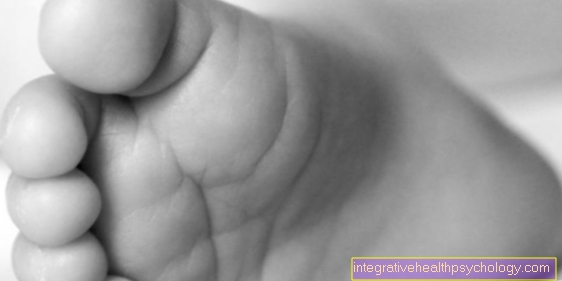
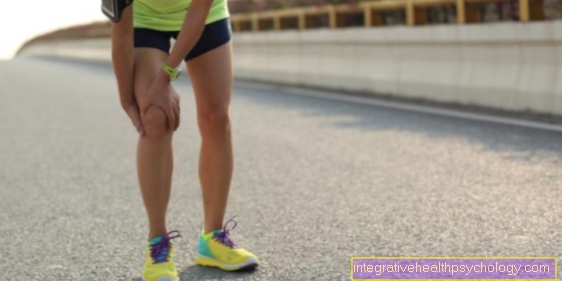
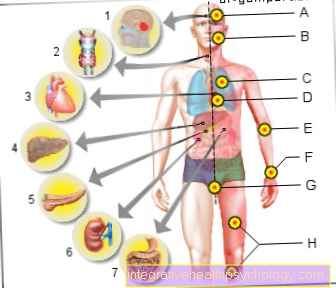
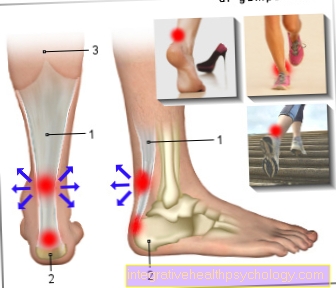
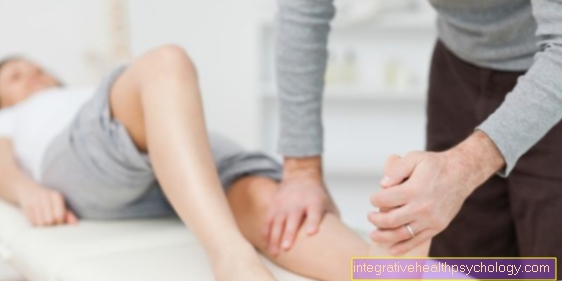

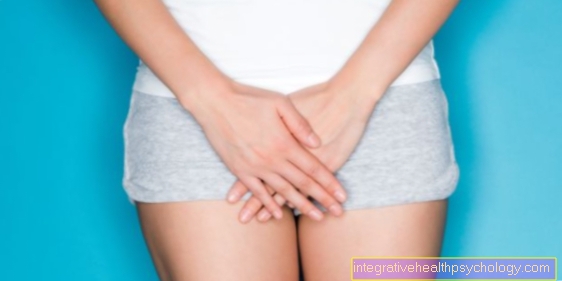

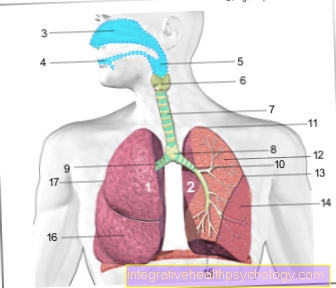

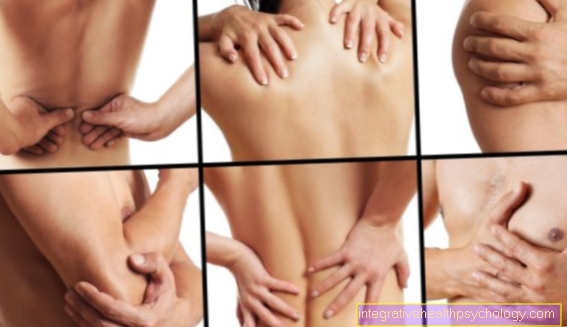



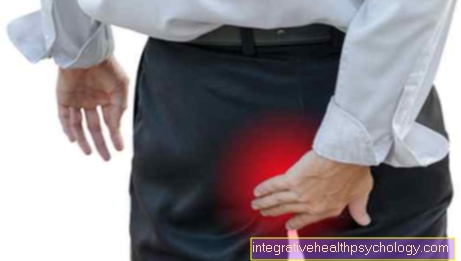
.jpg)
